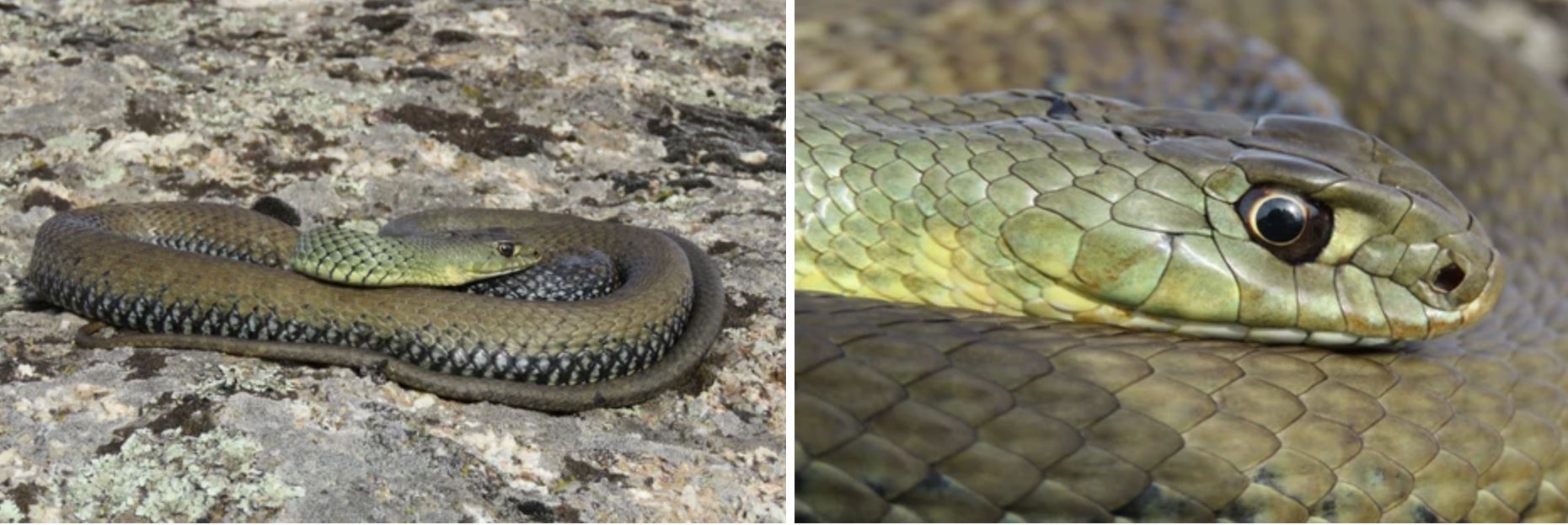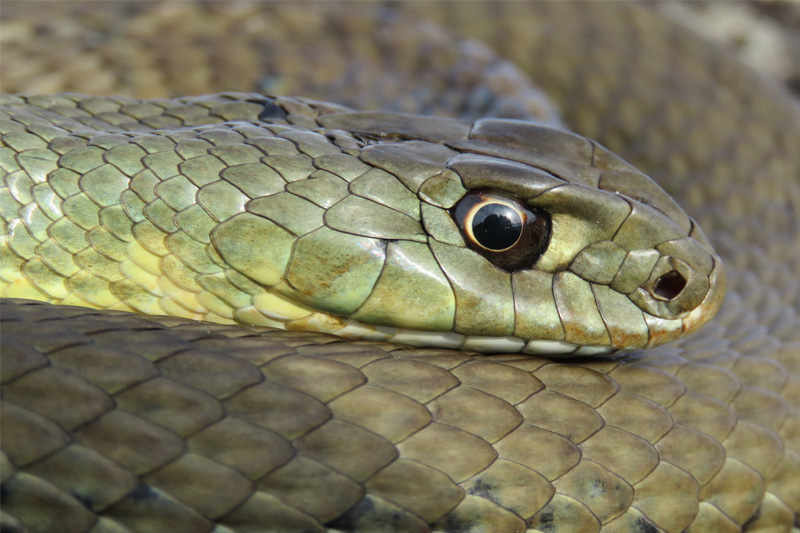9 April 2025
Unraveling the Genome of the Western Montpellier snake: A Key to Understanding Venom Evolution
Text by Salvador Carranza
A Milestone for ERGA in Reptile Genomics
In 2024, a collaborative team of researchers members of the European Reference Genome Atlas (ERGA) initiative successfully sequenced the genome of Malpolon monspessulanus, the Western Montpellier snake, under the Biodiversity Genomics Europe Project. This project, conducted across multiple institutions—including the Institute of Evolutionary Biology (IBE), the National Center for Genomic Analysis (CNAG), and Centre de Recerca i Educació Ambiental de Calafell (CREAC)—represents a significant advancement in reptile genomics, providing valuable data for evolutionary and conservation research. Malpolon monspessulanus is widely distributed across Western Europe and North Africa, yet its genomic information has remained largely unexplored. By generating a high-quality reference genome, this project contributes to ERGA’s broader objective of building a comprehensive genomic resource for European biodiversity, facilitating future research on reptilian genetics, adaptation, conservation, and venom evolution.
Read the Genome Report: https://preprints.arphahub.com/article/155085/

Distribution of the Western Montpellier snake as compiled by the IUCN Red List of Threatened Species. Version 2025-1. Photo by: Daniel Fernández
Deciphering Venom Evolution in Colubrid Snakes
A key aspect of this research is its contribution to understanding venom evolution in snakes of the family Colubridae. Unlike vipers and elapids, which have front-fanged venom delivery systems, M. monspessulanus is opisthoglyphous (rear-fanged), possessing venom-producing glands that have long intrigued evolutionary biologists. However, the genetic basis of venom production in colubrids remains poorly characterized. By sequencing and annotating its genome, we will be able to identify key genes involved in venom synthesis and evolution, shedding light on the development of venom systems across snake lineages. This research has important implications for evolutionary biology, toxinology, and potential biomedical applications. Understanding venom composition at the genomic level could provide insights into novel bioactive compounds with potential therapeutic uses.

Malpolon monspessulanus, the Western Montpellier snake. Photos by: Daniel Fernández
From Fieldwork to Genomic Insights
The project involved field expeditions to collect high-quality tissue samples, followed by state-of-the-art sequencing and genome assembly using long-read technologies. The genome annotation will reveal genetic markers linked to venom composition, environmental adaptation, and evolutionary history. Beyond its evolutionary significance, this research highlights important conservation challenges faced by M. monspessulanus. A major threat to populations is entrapment in man-made wells, where snakes frequently fall and are unable to escape, leading to increased mortality. As part of the project, researchers conducted field visits to these wells to rescue trapped individuals, providing an opportunity to sample populations while contributing to conservation efforts. These findings will help assess human-induced risks to reptile populations and guide potential mitigation strategies.
The newly generated genome will serve as a foundation for comparative studies on reptilian venom evolution, enhancing our understanding of how venom genes have diversified across different snake species.

To the rescue: researchers visit wells to rescue trapped reptiles and collect information about the populations. Photos by: Jaume Martín and Salvador Carranza
Acknowledgments and Future Directions
This research was made possible through the Biodiversity Genomics Europe Project and the ERGA initiative, with key contributions from IBE, CNAG, and CREAC. The genome of Malpolon monspessulanus is part of a larger effort to sequence the genomes of highly venomous, mildly venomous, and non-venomous snakes across the phylogenetic tree of snakes, aiming to uncover the genetic mechanisms driving the evolution of venom systems. Special thanks go to the Genomics Unit at IBE for producing the Hi-C library and to the sequencing teams and bioinformatics experts at CNAG for their meticulous work in ensuring the accuracy of the genome assembly. As ERGA continues to expand its genomic resources, this initiative will provide essential data to enhance our understanding of venom evolution, reptile biodiversity, and conservation genetics, bridging the gap between fundamental research and applied scientific advancements.




